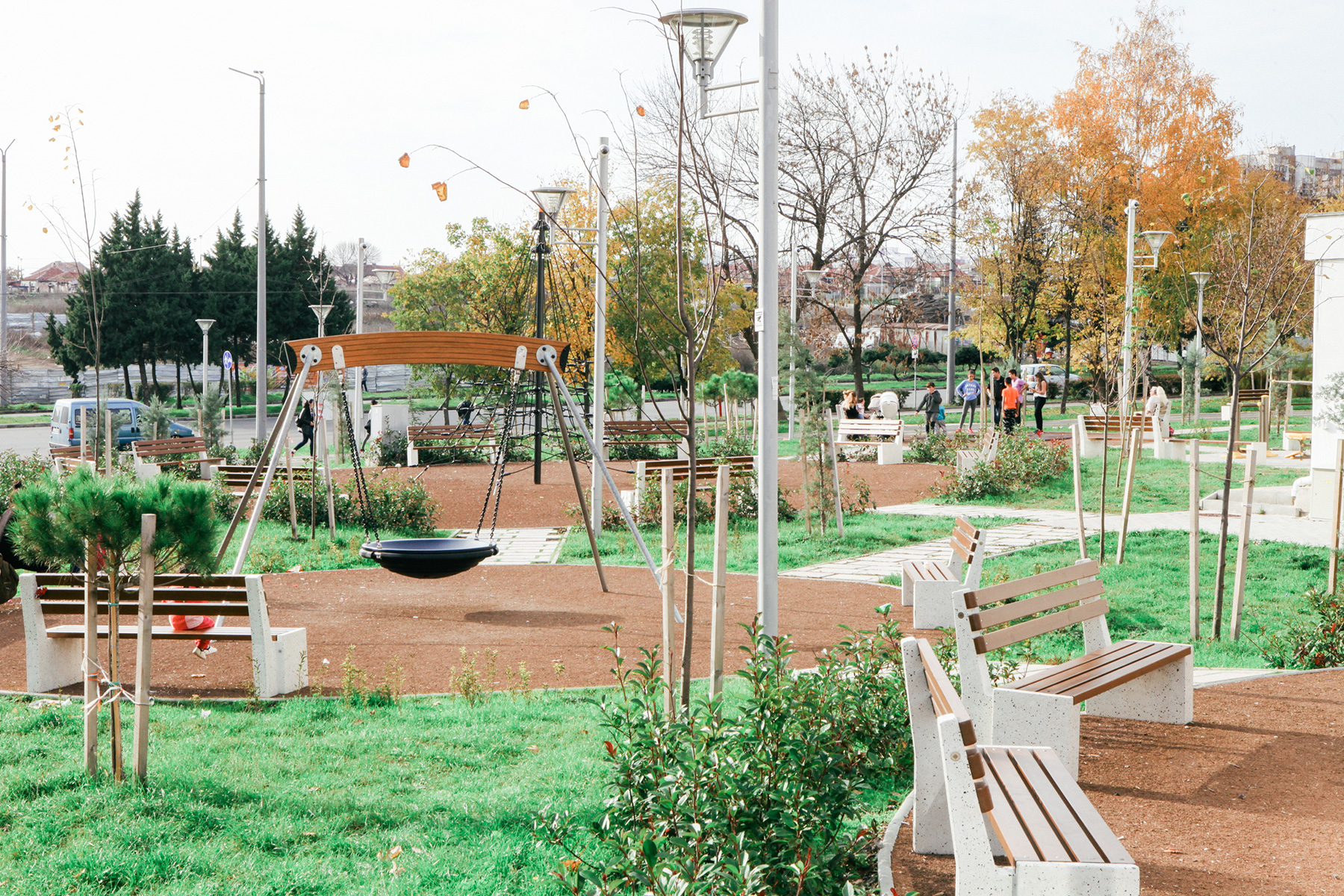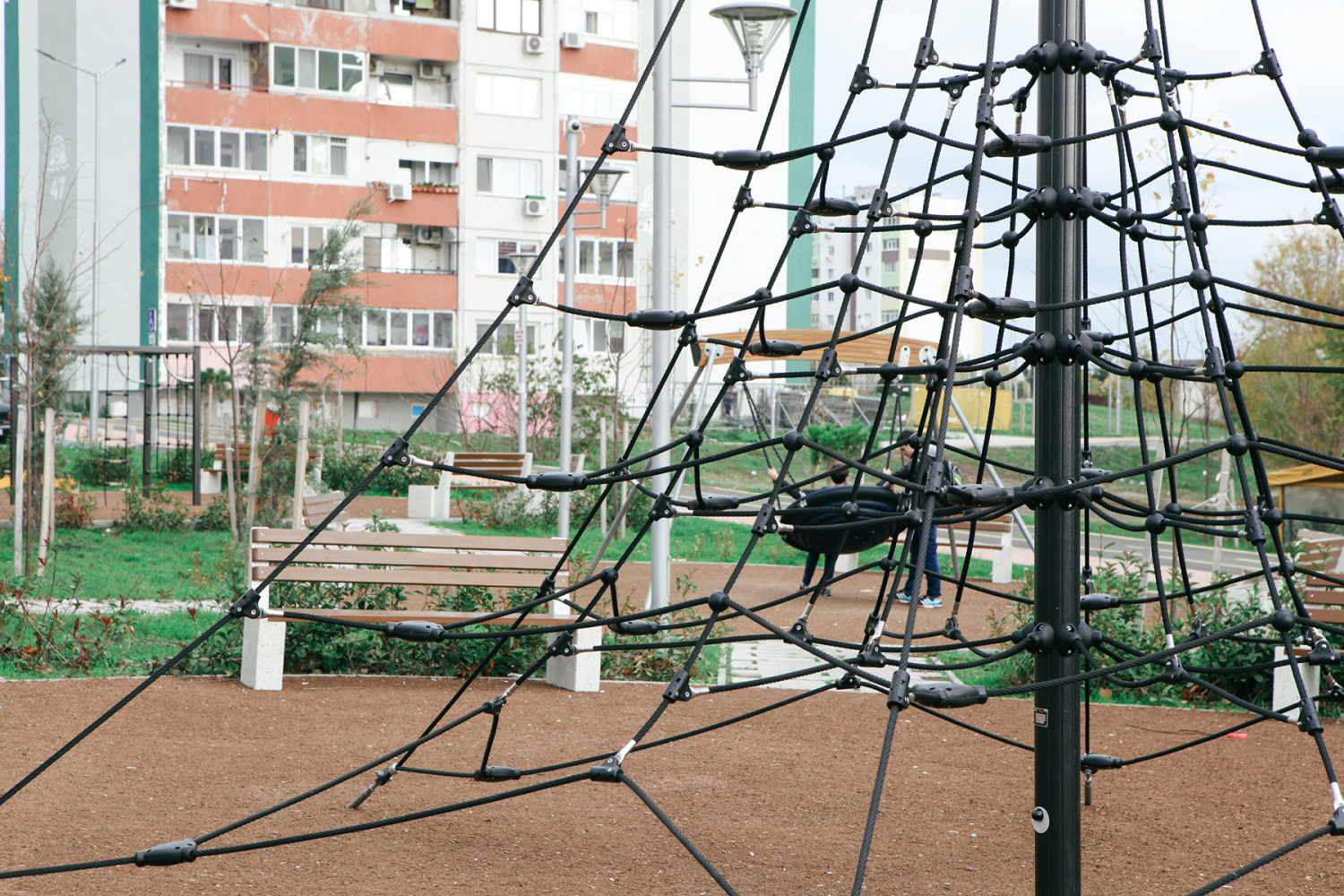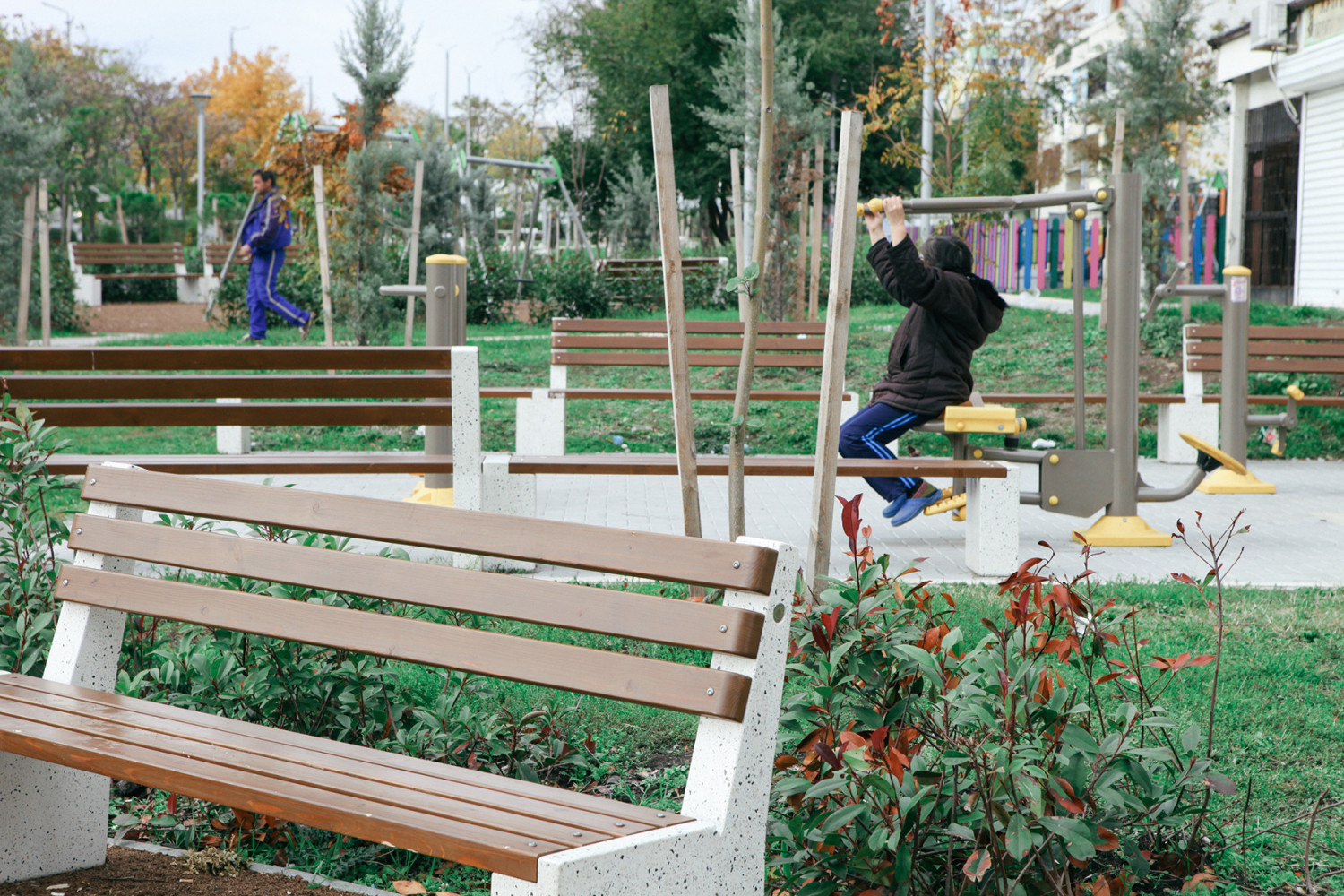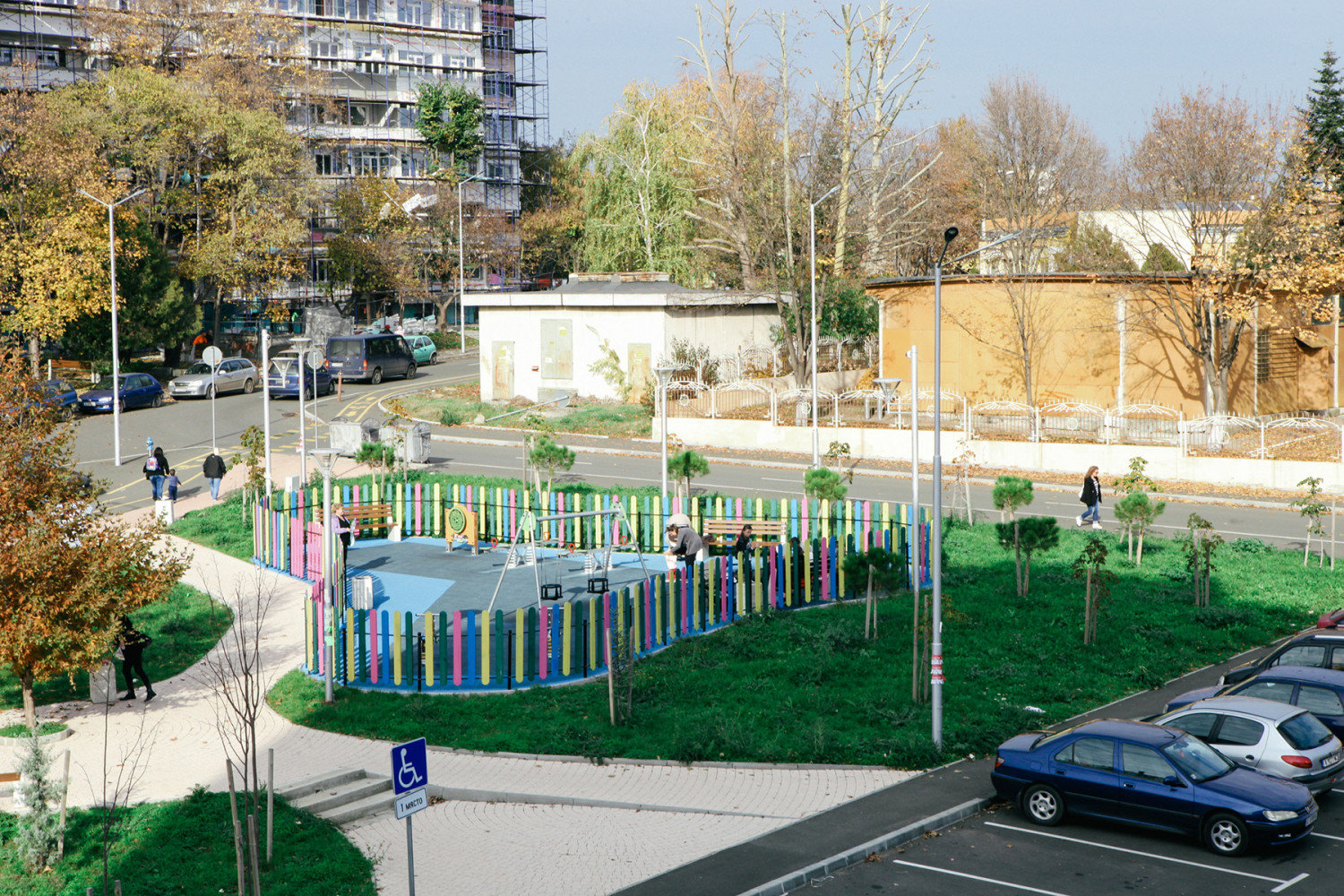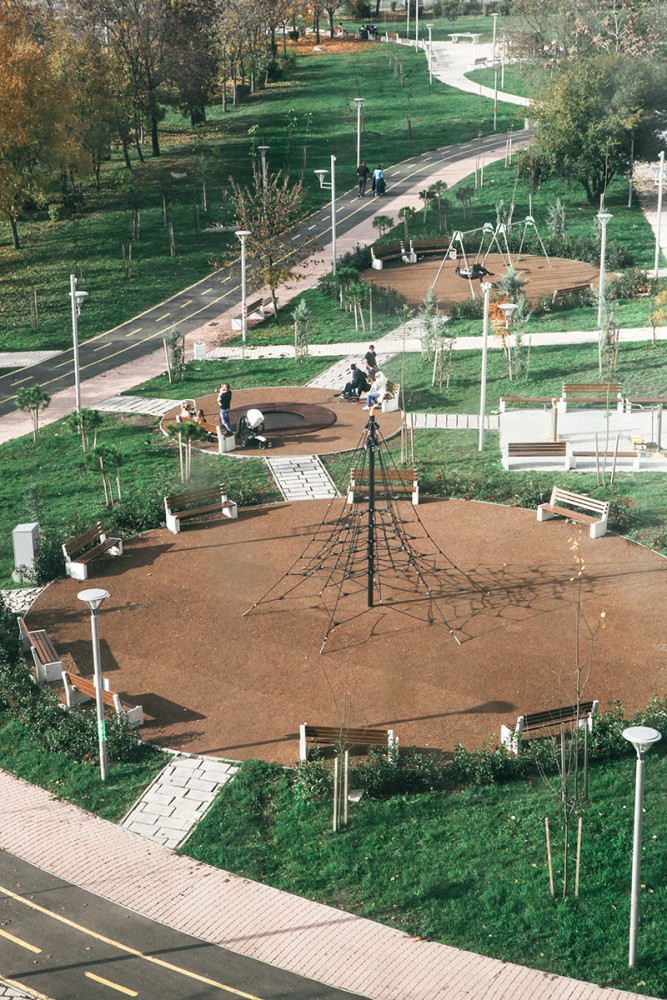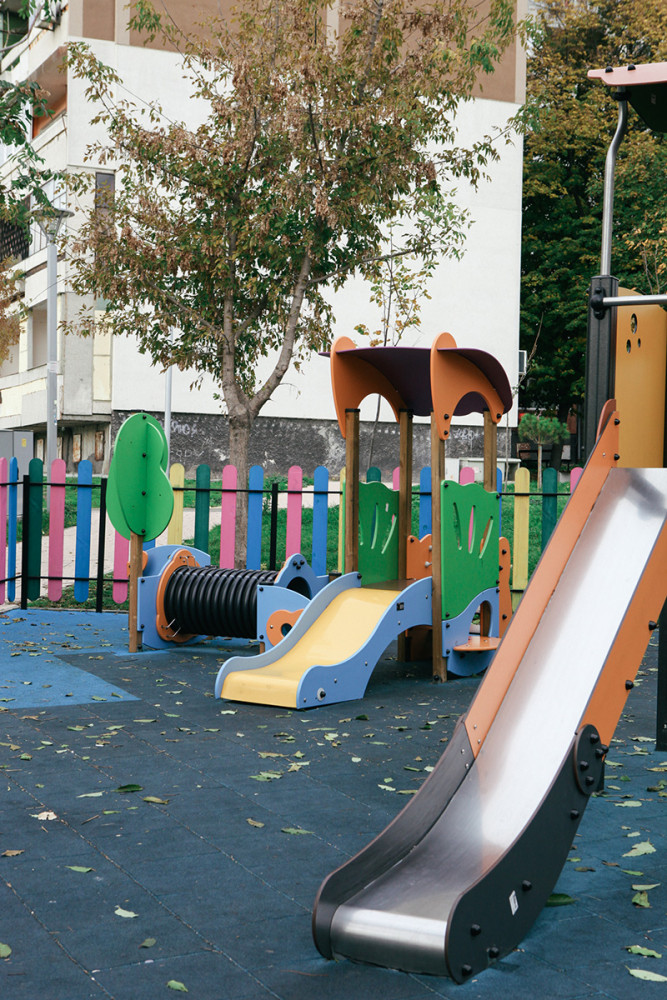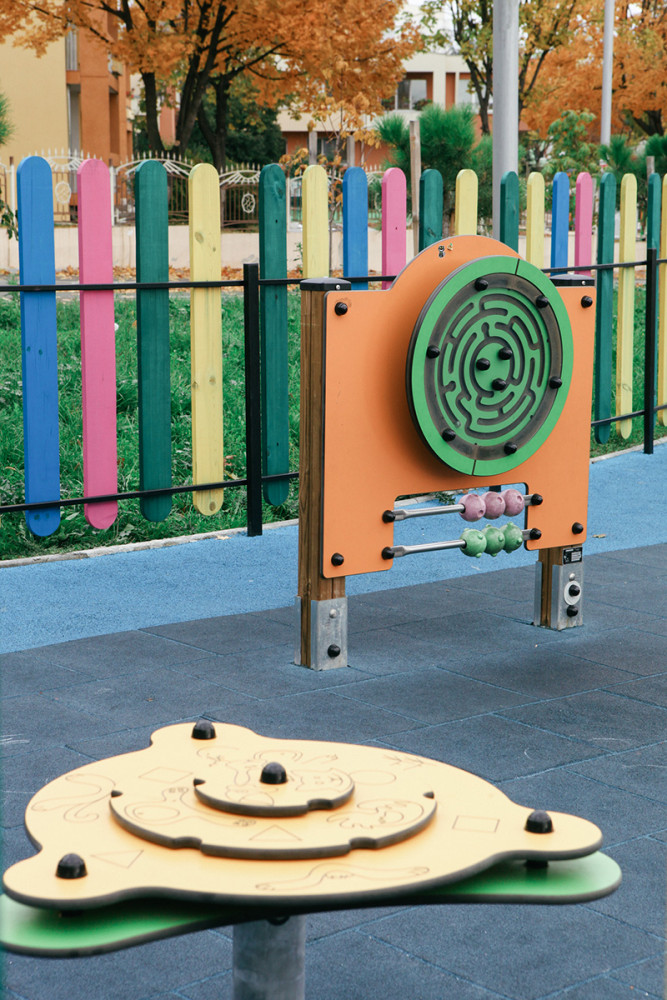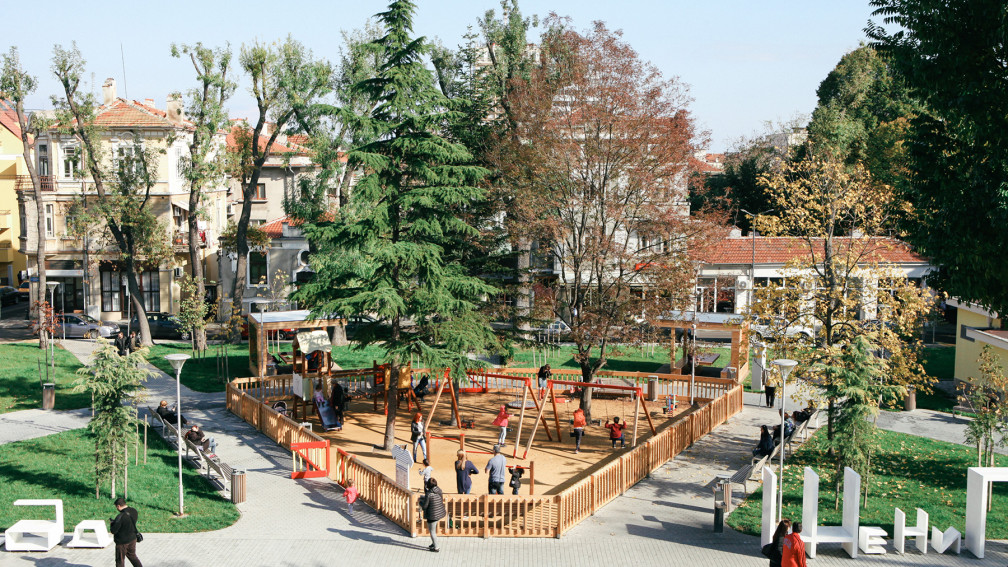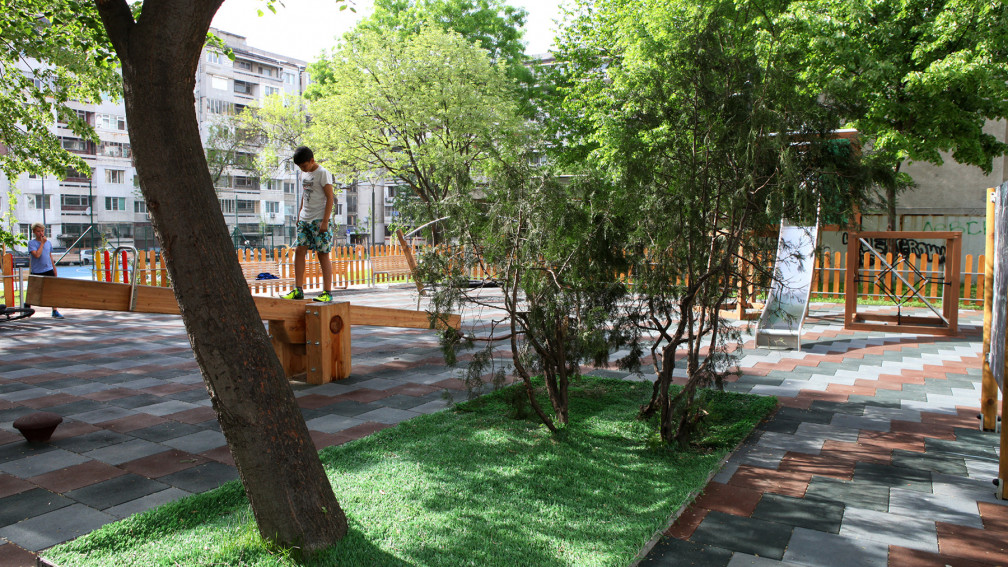The project for the reconstruction of the Meden Rudnik district is an example of urban design realized in a large area, suited to the available terrain so that it can give its best.
The district was created in the 1960s and is characterized by a vast territory, which allowed the team working on the project to run wild with their skills. Colleagues from IPA supported "Vamos" Ltd. with knowledge, skills, experience, and creativity as extensively as possible in creating solutions for the environment and people.
In addition to upgrading and reviving the green areas with tall new greenery, the project also includes the restoration of streets, including two of them that were part of the primary street network.
The transformation is in 5 of the large inter-block spaces, and the guiding principle at the start of the project was again to rethink the organization of movement in the entire territory.
The main focus was removing cars from inter-block living areas and creating an environment suitable for sports, recreation, and social and cultural activities. For this purpose, the profile of all streets included in and around the complex has been revised, and the options for new parking spaces have been utilized to the max.
Thanks to the exemption from cars in the green areas, new locations for cycling, pedestrians, and sports activities have been formed.
A big challenge in the project is the unevenness of the terrain, which IPA used and turned into a creative part of the design solution.
Bicycle paths, lawn, and roller skating areas have been created, recreational areas have been designed, and in the larger corners, they have been set aside for games - table tennis, badminton, or more extreme experiences such as climbing, jumping, and other different opportunities for sports and pastime.
The IPA project is the result of observing and applying uniform principles, like maximum utilization of the recreation area, moving the parking outside the inter-block space, setting aside areas for active sports and pastimes, connecting with the bike lane network, introducing energy efficiency measures, collection and utilization of rainwater, division of areas for composting.



